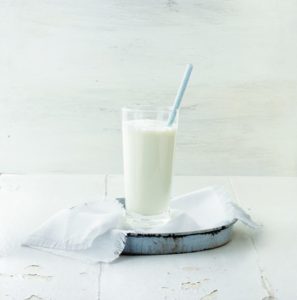

Lactose Intolerant? Here’s what you need to know


Lactose Intolerant? Here’s what you need to know
 Many people wonder if they may be lactose intolerant, but unfortunately there’s a lot of misinformation out there, which leads to lots of confusion! Most importantly, having a lactose intolerance does not mean that you must give up your favourite dairy-based foods. In fact, I am lactose intolerant and still enjoy cheese on my pizza, Greek yogurt in smoothies and cream in my coffee! So, here are the facts, straight from this lactose intolerant dietitian:
Many people wonder if they may be lactose intolerant, but unfortunately there’s a lot of misinformation out there, which leads to lots of confusion! Most importantly, having a lactose intolerance does not mean that you must give up your favourite dairy-based foods. In fact, I am lactose intolerant and still enjoy cheese on my pizza, Greek yogurt in smoothies and cream in my coffee! So, here are the facts, straight from this lactose intolerant dietitian:
What is lactose intolerance?
When you are lactose intolerant it means that your body has a hard time digesting a sugar called “lactose”, which naturally-occurs in milk products. In fact, what bothers most people with lactose intolerance is consuming too much lactose all at once, which can lead to gas, diarrhea or bloating. In fact, most lactose intolerant adults can tolerate up to 12-15 grams of lactose (equivalent to 250 ml of milk) daily with no discomfort! This means you can still enjoy your favorite dairy-based foods, just in smaller amounts.
What to do if you are lactose intolerant
If you have a lactose intolerance, try drinking lactose-free milk (you can find this in the refrigerated milk section of the grocery store). These contain an enzyme called “lactase”, which helps break down the lactose, making it easier for you to digest. Lactase can also be found in pill form, which can be taken prior to eating a meal that contains milk products, like pizza! Here are a few more tips:
- Drink milk or enjoy other lactose-containing foods or drinks in small quantities throughout the day.
- Always drink milk or eat other lactose-containing foods alongside other food, versus on an empty stomach.
- Eat cheese! Hard cheese like cheddar or parmesan is naturally lower in lactose, making it easier to digest.
- Consume yogurt and yogurt-based drinks like kefir. They contain live (and good) bacteria that help breakdown lactose.
- Limit foods that cause you discomfort. Everyone is different. While you may be able to consume macaroni and cheese, another individual with lactose intolerance might not. Everyone has a different threshold for lactose too—experiment with amounts and types of lactose-containing foods to see what you can tolerate.
Lactose intolerance versus dairy allergy – they’re different!
It is easy to confuse a lactose intolerance with a milk allergy, but the two are unrelated. Both result in unpleasant symptoms, but those with a milk allergy have an immune response to the protein in milk and will therefore have symptoms relating to an allergy such as rash, wheezing, diarrhea, nausea and vomiting. People with a true milk allergy can’t have any products containing dairy. If you react to milk products, consult with your doctor to see if it is a lactose intolerance or a milk allergy.
 Written By
Written By
Sarah Remmer, RD is a Registered Dietitian, mom of 3, author, media spokesperson and founder of The Centre for Family Nutrition based in Calgary, Alberta. Her practice, as well as her blog focuses on infant, child and family nutrition, with helpful articles on starting solids, picky eating, family meals, pre-natal nutrition and more.
 Written By
Written By



